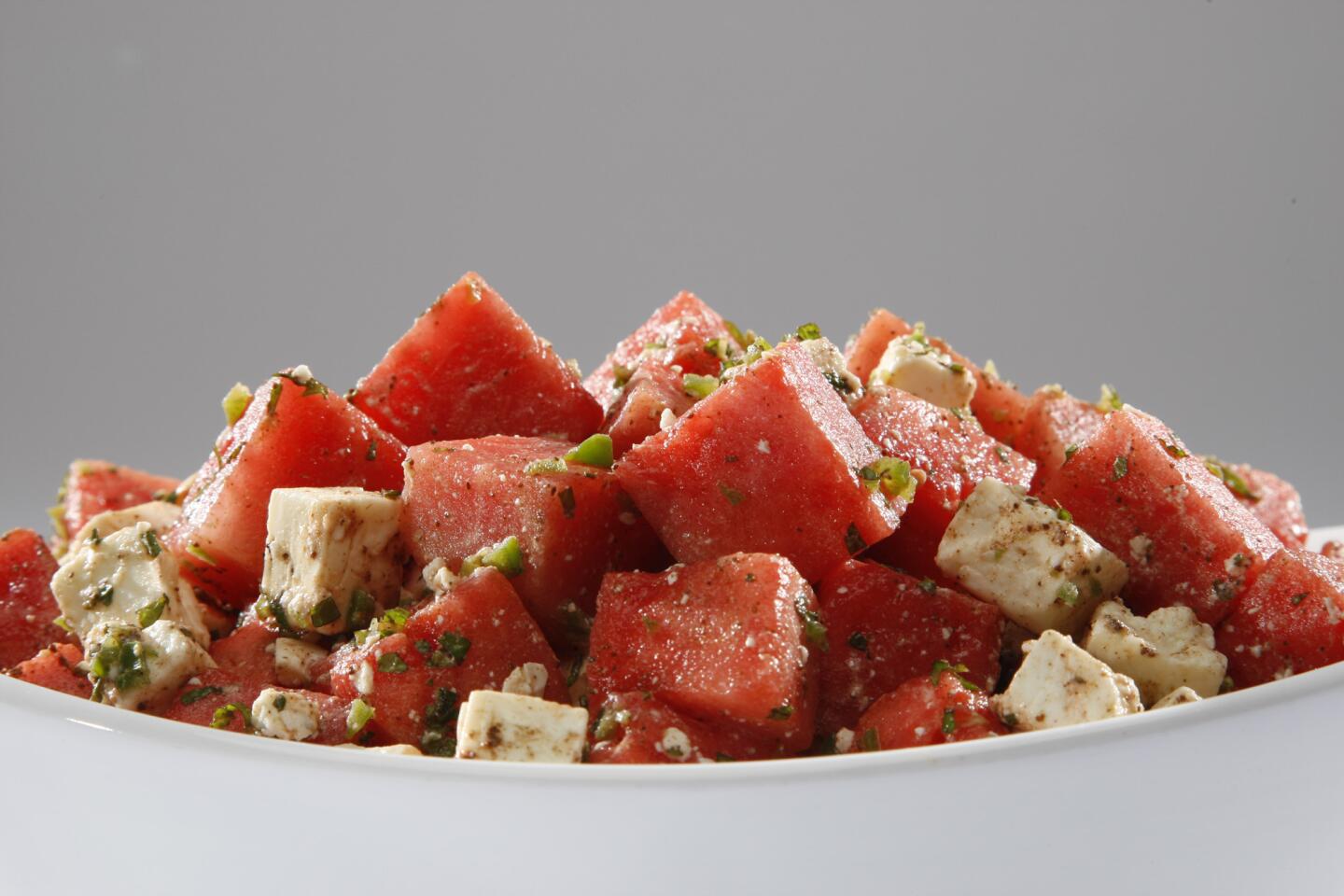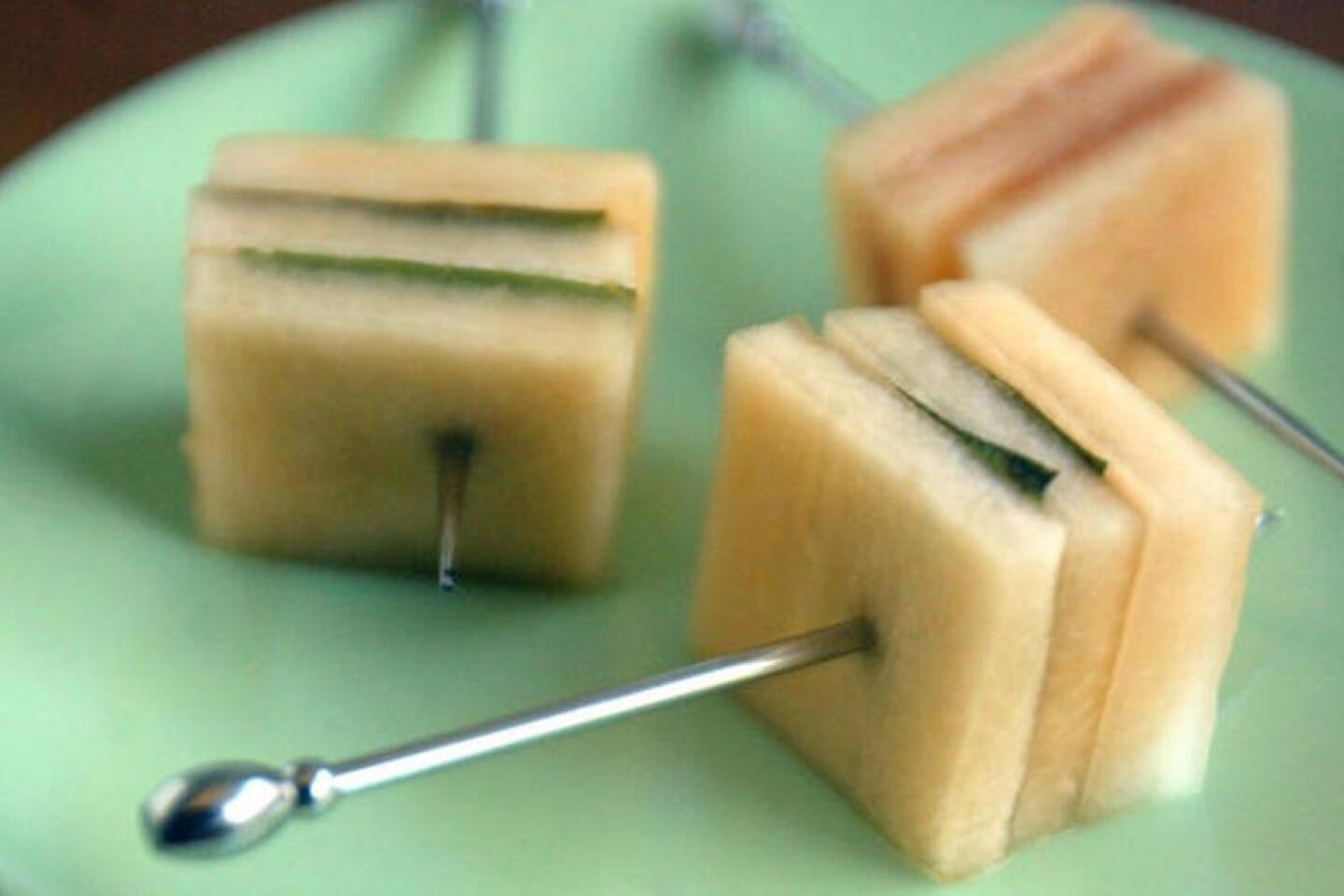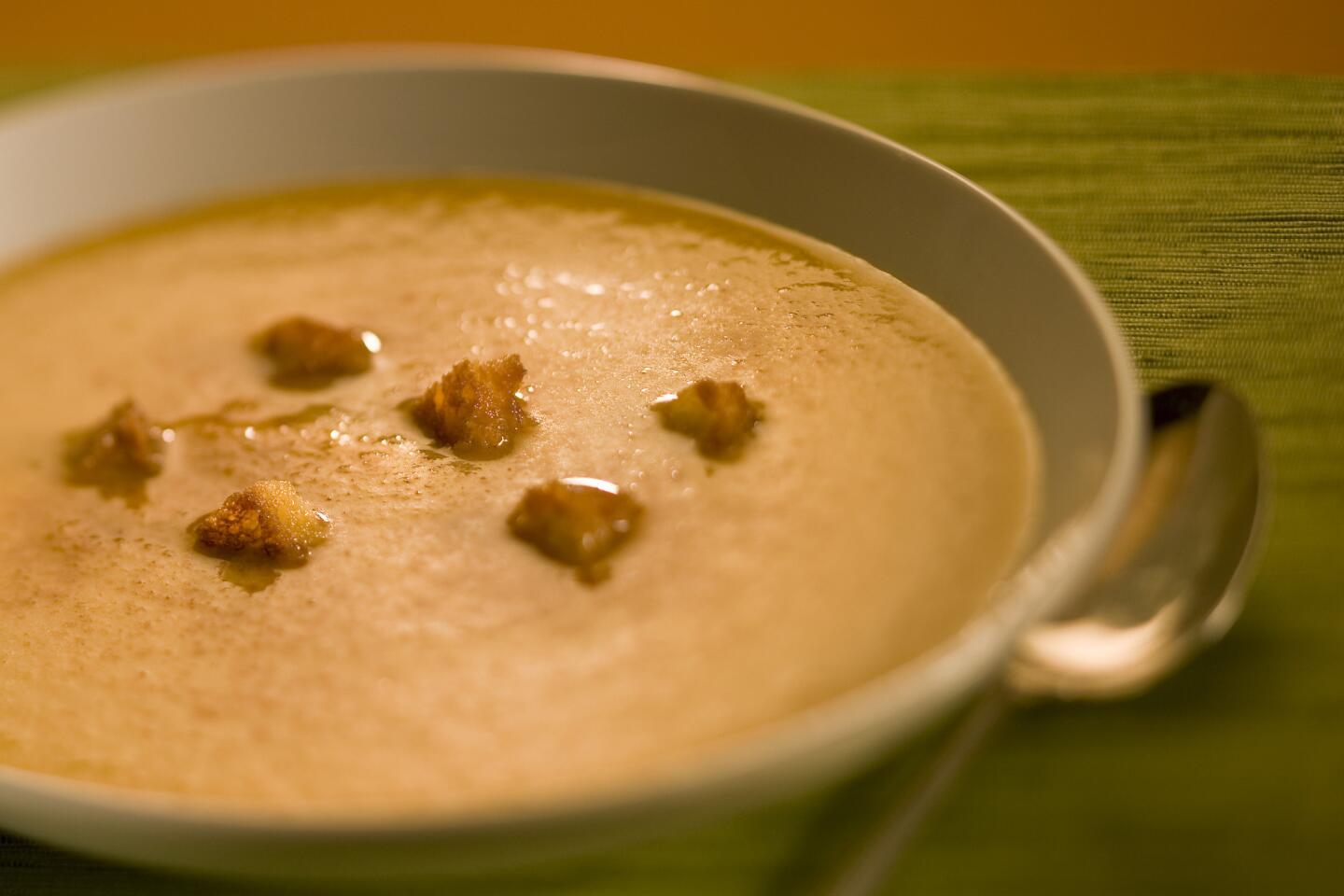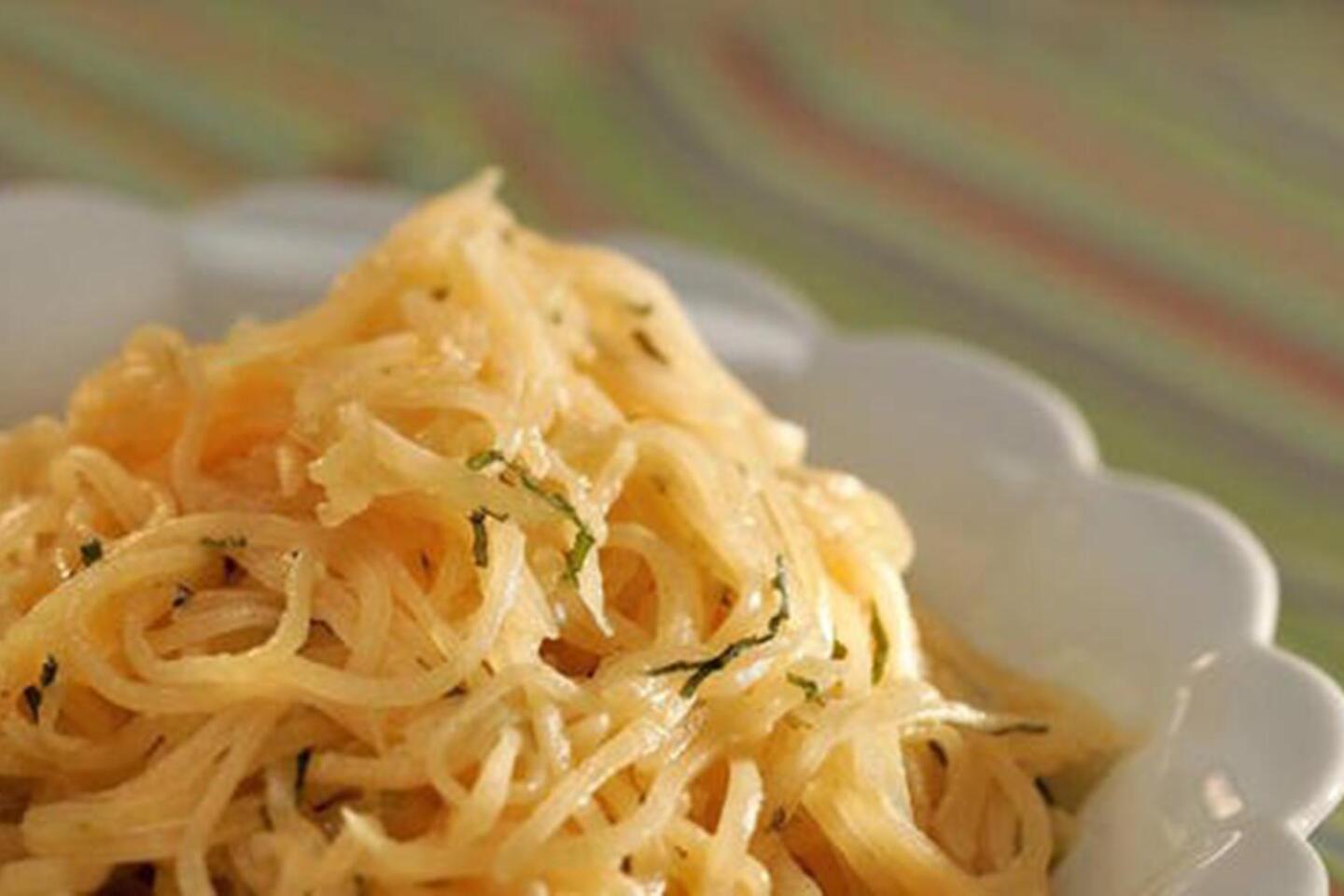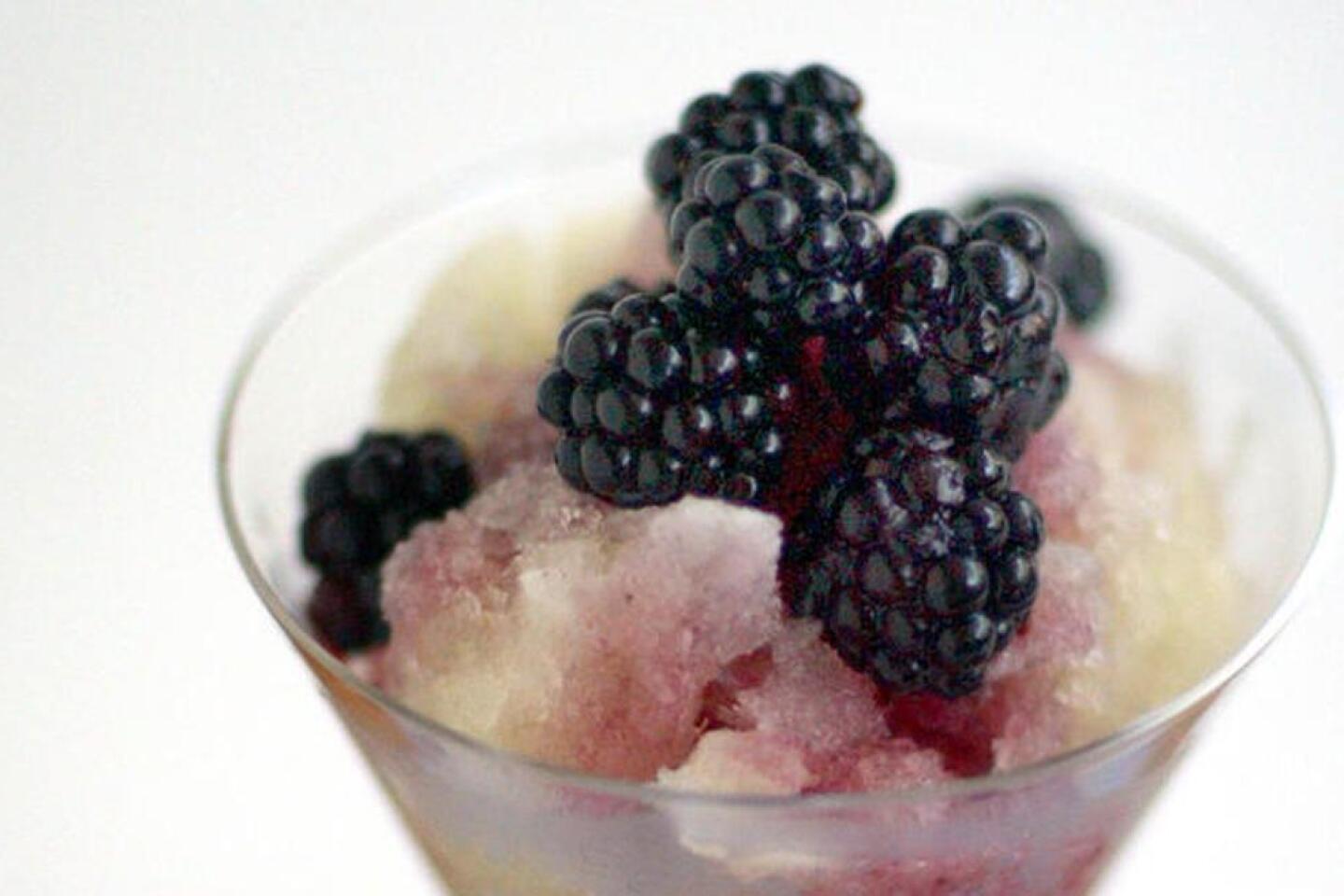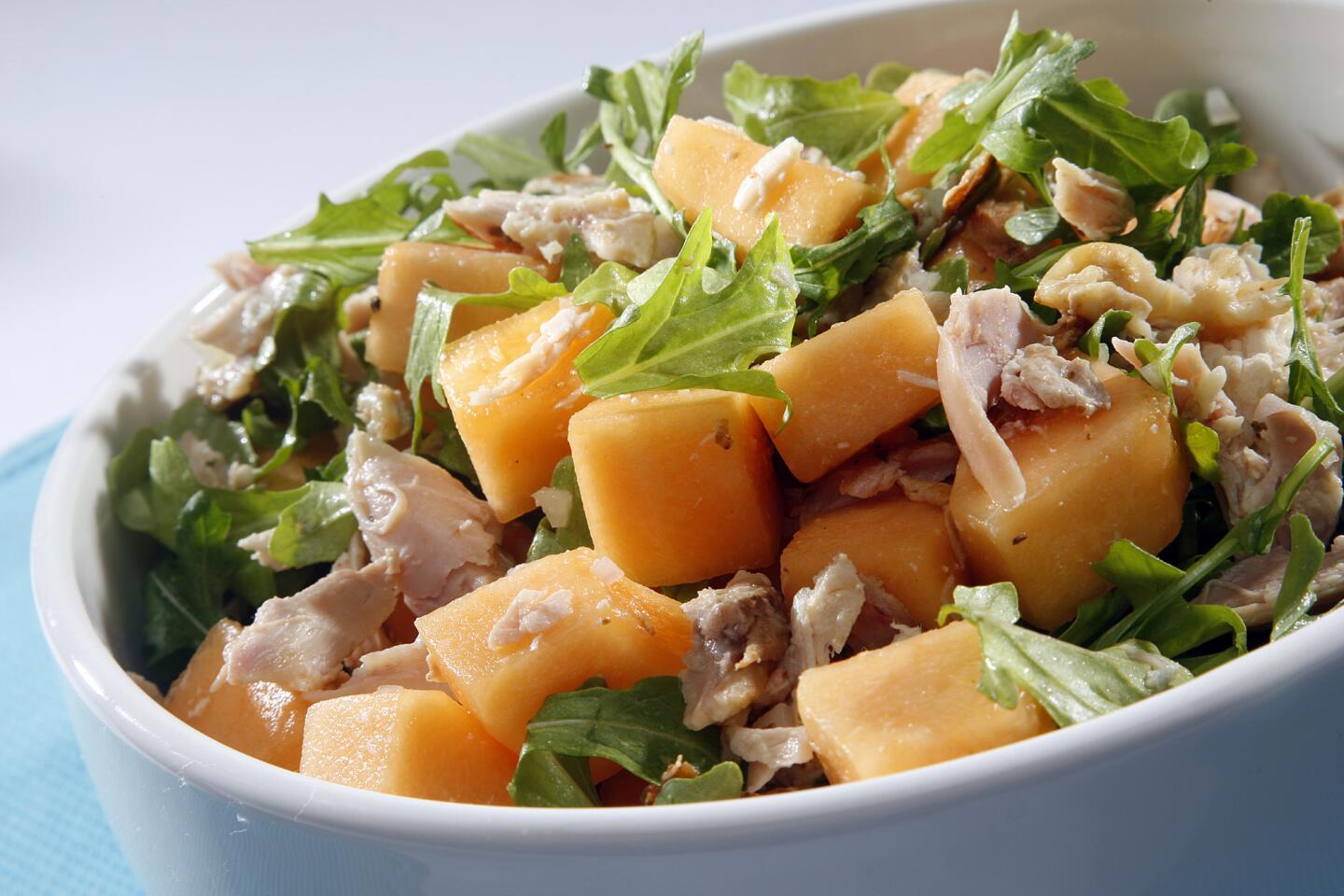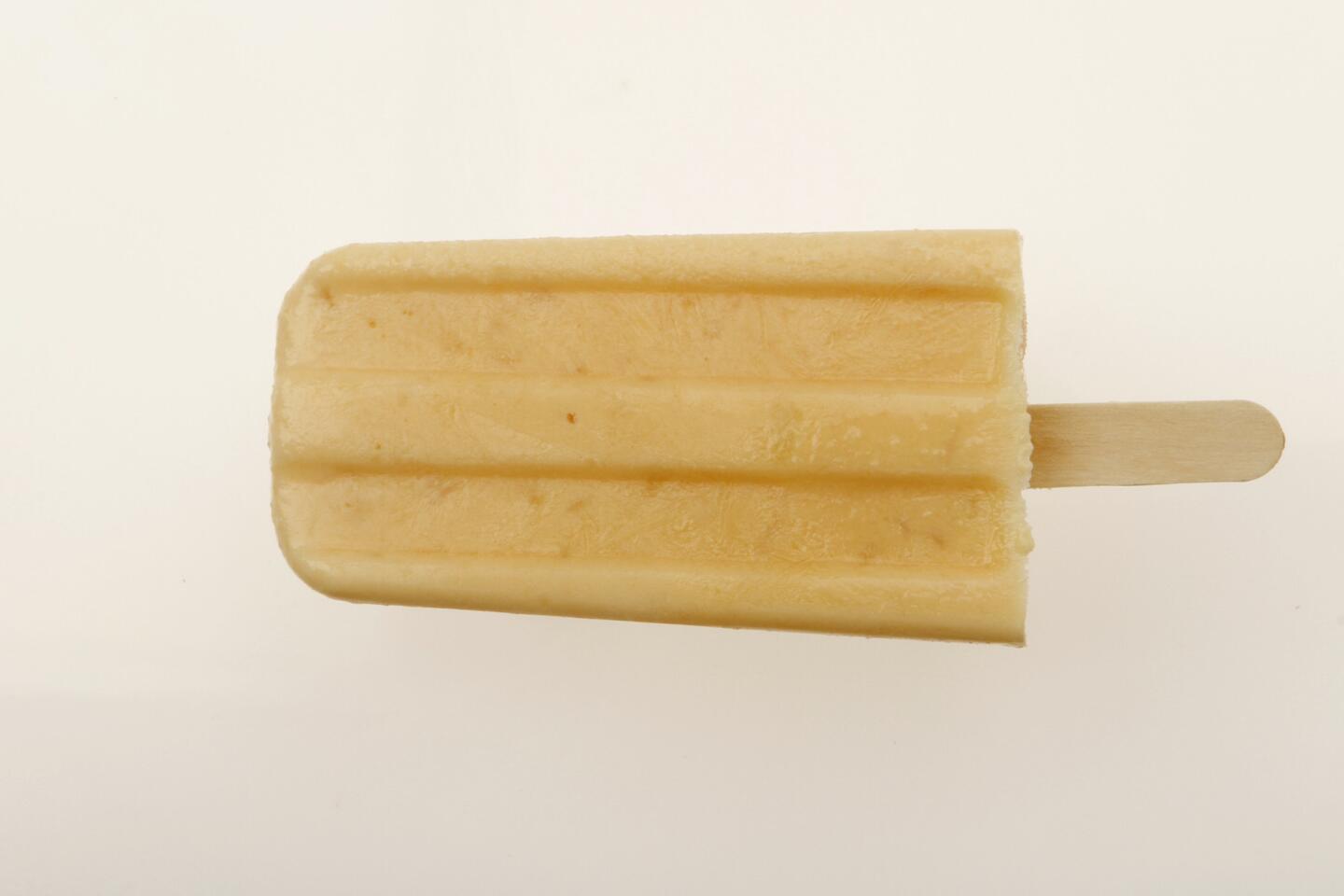Buy This Now: Melons, with 12 recipes
A great melon can be almost shocking in the intensity of its flavor -- musky, sweet, floral, it can set you back on your heels. A bad one tastes like cucumbers.
But how do you tell the difference?
First, remember that there are three main families of melons, and each has its own markers.
Melons with rough, netted rinds (such as muskmelons and cantaloupes) are the easiest to choose. The best indicator is a powerful perfume; you’ll be able to smell them from a distance. The netting should be raised and the rind underneath should be tan to golden, not green. These melons “slip” from their stems when ripe, so the bellybutton will be clean. Another tip: On really sweet ones, you’ll see some cracking around the bellybutton, which is an indicator it stayed on the stem until it was fully ripe.
Smooth-skinned melons (such as honeydews) are tougher to choose, mainly because they give off little or no perfume (their Latin botanical name is “inodorous”). Look for melons that have a slightly velvety, almost waxy texture to the rind; a background color that is more rich and creamy than pale and ivory; a golden color to the pale spot where the melon rested on the ground; and, again, subtle cracking around the stem end. If you find a melon that has freckles, buy it: Those are sugar spots.
Watermelons will also have a waxy skin. Look also for a vivid green color and check the couche, the pale spot where it rested on the ground: It should be pronounced and golden. And yes, give a watermelon a thump. It should sound like a hollow-core door.
How to store: Melons can be stored at room temperature. They will continue to ripen after being picked. Personally, I like my melons cold, so I chill them in the refrigerator the night before serving.
Are you a food geek? Follow me on Twitter @russ_parsons1
More to Read
Eat your way across L.A.
Get our weekly Tasting Notes newsletter for reviews, news and more.
You may occasionally receive promotional content from the Los Angeles Times.
